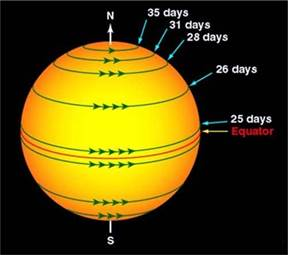New Delhi: Using 100 years of daily records of the Sun at the Kodaikanal Solar Observatory, astronomers from the Indian Institute of Astrophysics (IIA), an autonomous institute of DST, have succeeded in mapping, for the very first time, the variation in the rotation speed of the Sun’s chromosphere — from the equator right up to its polar regions.
The research, published in the Astrophysical Journal, can help give a complete picture of the Sun’s inner workings.
Earth spins like a rigid ball, completing a full rotation every 24 hours. But the Sun, being a giant ball of plasma, has different parts that rotate at varied speeds, depending on their latitude.
Astronomers from the IIA used solar plages — a bright region in the Sun’s chromosphere — and networks from daily records of the Sun stretching over 100 years, maintained by the 125-year-old Kodaikanal Solar Observatory, operated by the IIA.
“The Kodaikanal Solar Observatory is just one of two such places in the entire world with such long-term data,” said Muthu Priyal, a co-author of the study, working at IIA.
“We hit on the idea of using solar plages and networks to measure rotation speeds. Images captured at the specific wavelength of 393.3 nanometers (due to the Calcium K spectral line) showcase the lower and middle chromosphere and display prominent features like plages (bright regions) and network cells (convective structures),” she added.
Unlike sunspots, plages are brighter regions with weaker magnetic fields. They reside in the chromosphere and are significantly larger than sunspots, ranging from 3 to 10 times the size of sunspots.
Network features, on the other hand, are embedded with weaker magnetic fields and are about 30,000 km across. They are slightly larger than individual sunspots but smaller than sunspot groups.
Both plages and networks are continuously present across the Sun’s surface throughout the solar cycle.
By analysing data from the Observatory, the team extracted the rotation period of these features at various latitudes.
This revealed a clear picture of the Sun’s differential rotation — faster at the equator (13.98 degrees per day) and slower towards the poles (10.5 degrees per day at 80 degrees latitude), said the team.
–IANS


Comments are closed.